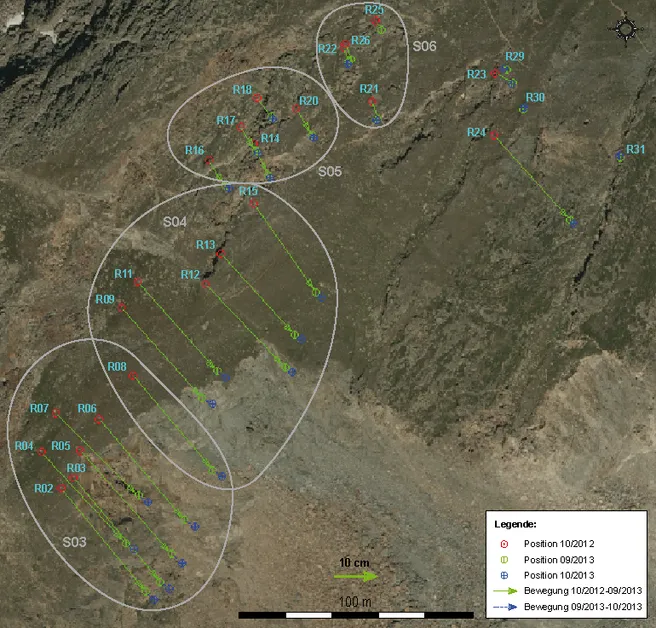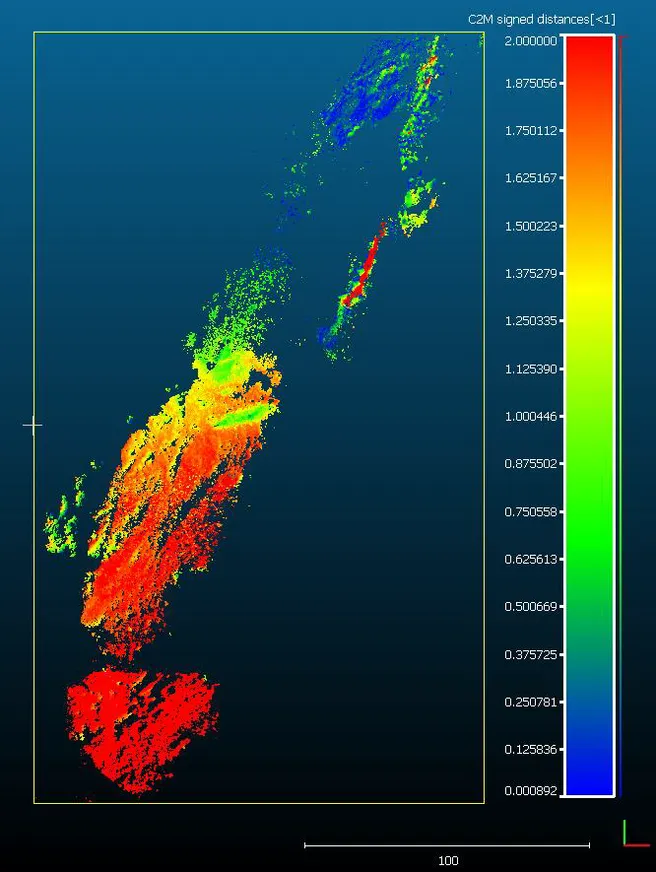Deep mass movements on Marzelkamm in the Austrian Oetztal are monitored. The assessment of the prevailing movements are based on geodetic measurements. As a basis of comparison for the deformation analysis, data is used which was recorded in the previous year.
To enable a location-based analysis of the mass movement photogrammetric images are used additionally. The observation of the sliding slope is carried out by terrestrial stereo images. It is tested if these images are suitable for the generation of an elevation model. Since the existing control information, displayed by the geodetically detected measuring points, can not be fully used, the geo-referencing which is based on those points, represents a major challenge.
The results of the geodetic measurements show that there are individual point groups with similar motion direction and speed, which seem to be located on connected slabs. It has come to unexpectedly strong movements of up to 14 cm within one year. The deformations in the sliding slope are measured at a maximum of 50 cm. Since the slipping of individual slabs can be a threat to the villages located below, further monitoring is necessary to ensure an early introduction of appropriate security measures.
For geo-referencing two methods are tested and the created elevation models are compared to data from the previous year. According to the first method there are differences in height exceeding 2 m. This is not plausible, since it is known by the geodetic surveying, that the maximum height differences are at 40 cm. Consequently this elevation model is not usable. The second method provides outcomes that reflect the results of the geodetic monitoring. This confirms the basic suitability of terrestrial stereo images to the generation of height models.
(Masterthesis M. Apfel, 2014, www.geo.bgu.tum.de)




